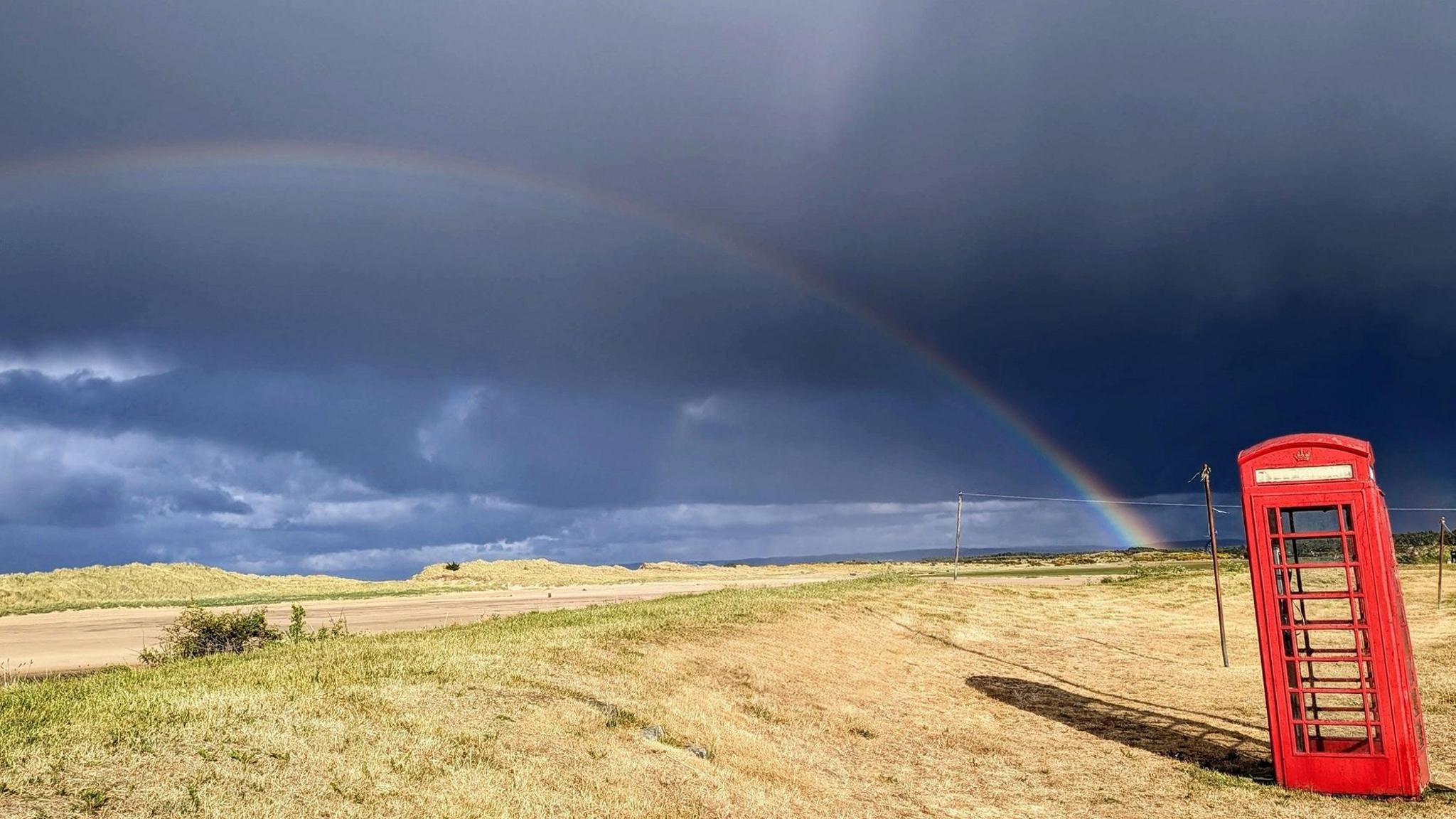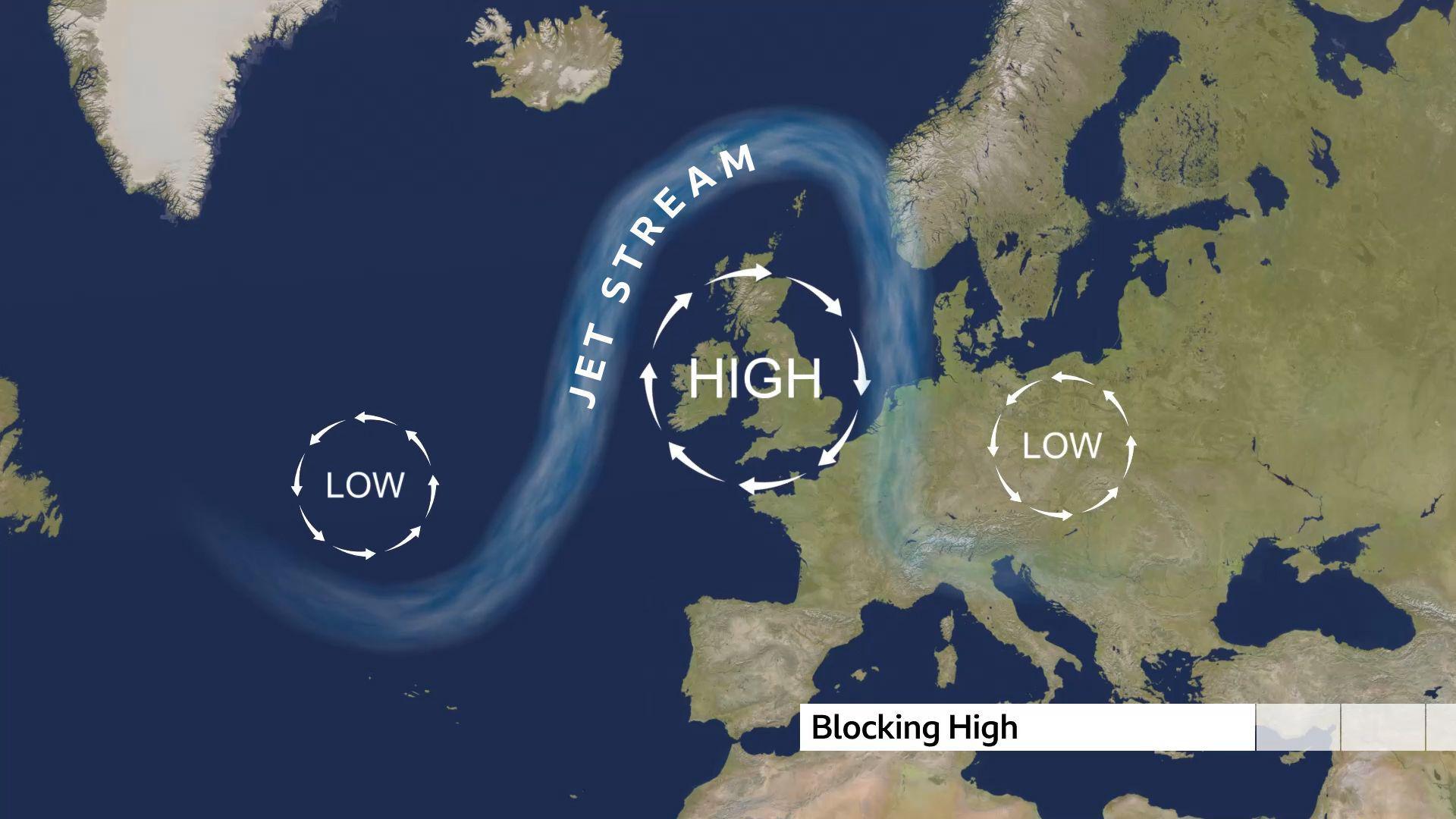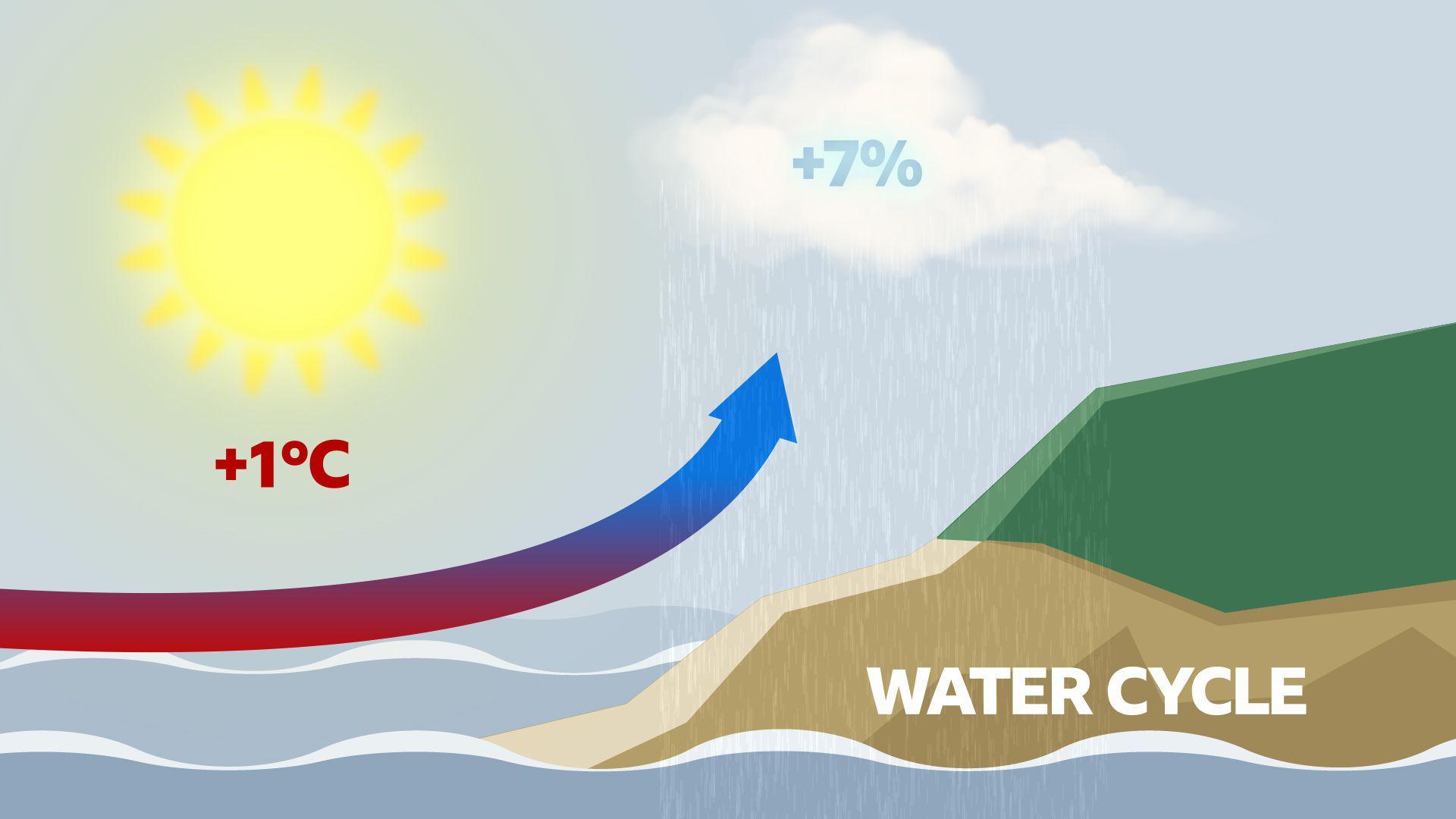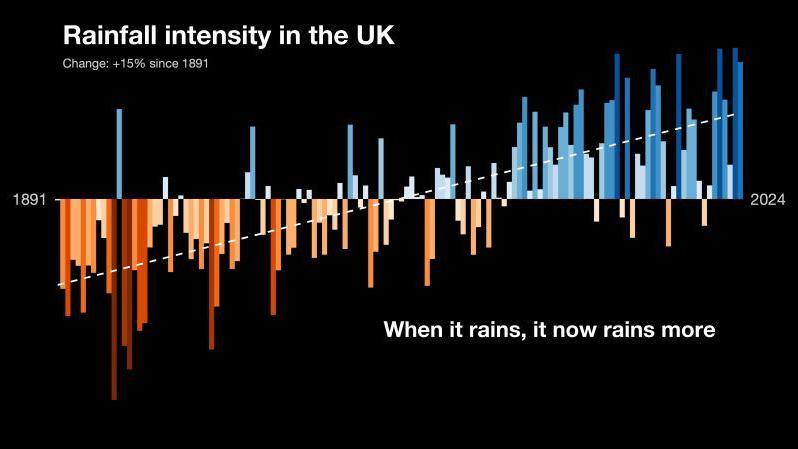Dry heat to torrential rain - enter the age of 'weather whiplash'

Threatening skies over Lossiemouth at the weekend as the long dry spell came to an end
- Published
After weeks of dry, sunny conditions in Scotland, torrential downpours over the bank holiday weekend marked a sudden change in weather.
Barely a drop of rain was recorded over almost the entire month.
March and April were far drier than normal, with May seeing only 4% of the normal rainfall by the middle of the month.
This flip between extremes has introduced a new phrase to our forecasting vocabulary - weather whiplash.
Some scientists believe we will have to get used to the idea that our weather will see wild swings from one extreme to another over short periods of time because of climate change.
Pendulum of change
The settled spell was caused by persistent blocked weather patterns, with high pressure dominating.
The jet stream - a fast-flowing current of air - helped lock high pressure in place, deflecting low pressure systems and rain elsewhere.
Before the weather turned last weekend, Scotland had only recorded 41% of its usual spring rainfall, with just seven days left of the season.
This switch is driven by a warming world speeding up the water cycle and allowing the atmosphere to hold more water. So when it does rain, the rain is heavier, which in turn can lead to flooding.
We know that our weather will continue to become more extreme, because global temperatures are rising due to human-induced climate change.
Spring is the fastest warming season in the UK across all four nations. So when the sun is out, the temperature will be higher than historical records.

The jet stream in an omega block pattern, locking high pressure overhead the UK
Blocked weather patterns are a natural part of our weather variability but they help increase the weather extremes created by a warming world.
However, climate scientists are not in agreement that we'll see more blocked patterns in the future.
One school of thought is that a warming Arctic makes the jet stream more "wavy", allowing high pressure to become stuck and the blocking to occur, but an increase in blocking events isn't supported by the climate models used to predict future trends.
Climate scientist Dr Matt Patterson, from the University of St Andrews, told BBC Radio's Good Morning Scotland: "In terms of how it is changing, that is something scientists are not really sure about.
"There is no clear trend with climate change as far as we can tell in the observations so far and that's because there is a lot of variability from year to year that contributes to our weather."
Good and bad for business

Kate Carter-Larg has run the Cheesy Toast Shack in St Andrews since 2015
In reality, the dry spring comes as a double-edged sword.
At the Cheesy Toast Shack on the East Sands of St Andrews, the dry weather has been a boon for business, with trade up 30% compared with May last year. Owner Kate Carter-Larg said:
"Last spring was a little on the wet side and the weather has definitely helped this year. We've just been incredibly busy - midweek, weekends - it's just busy all the time. It's a huge factor that the weather has been so dry."
But our farmers and growers have been struggling in the dry conditions.
Water scarcity also prompted a plea to the public from Scottish Water, to actively think about our water usage in order to conserve reserves.

Climate scientist Dr Matt Patterson warns of further episodes of weather whiplash
Dr Patterson said: "With climate change we can expect that we're going to see more periods of variability in weather.
"It's often been called 'weather whiplash', the idea that we have some very prolonged dry periods, but then also when it rains, it rains more heavily".
Warmer atmosphere holds more water

One of the impacts of our warming climate is that the atmosphere holds more water.
For every one degree increase in global temperature, our atmosphere holds 7% more water. As a result, the natural water cycle is sped up and intensified.

Rainfall intensity in the UK has increased since the 1800s
The impact of climate change on our day-to-day weather is marked.
The intensity of UK rainfall has increased by 15% since 1891, with an observed increase in each season, though winters are wetter than summers.
Five of the ten wettest years recorded in the UK have occurred in the 21st century. Six of the UK's top-ten warmest years have occurred since 2014 and all of the top ten warmest years have occurred in the 21st century.
Statistics supplied by Royal Meteorological Society and Met Office.
Related topics
- Published22 May
